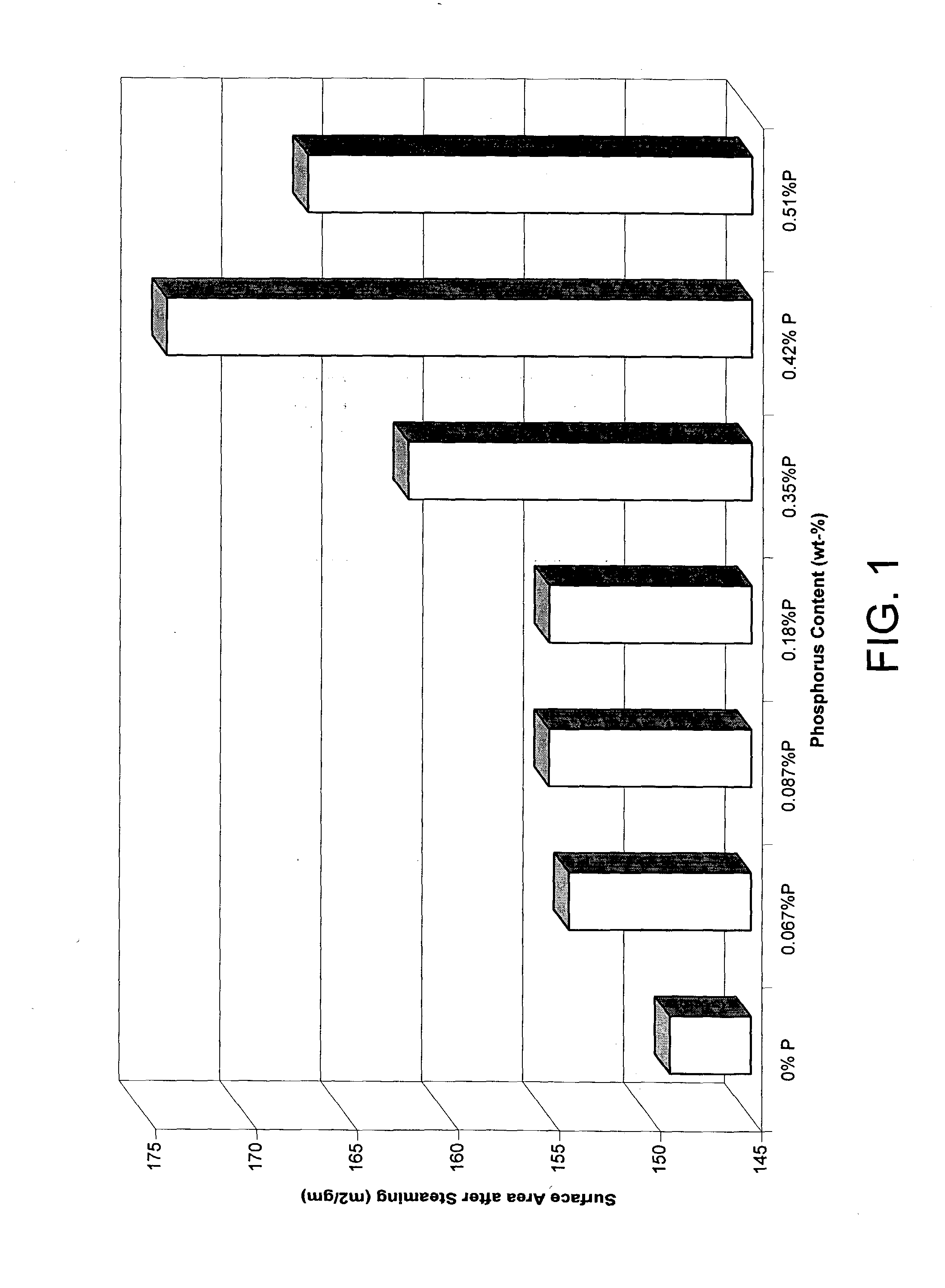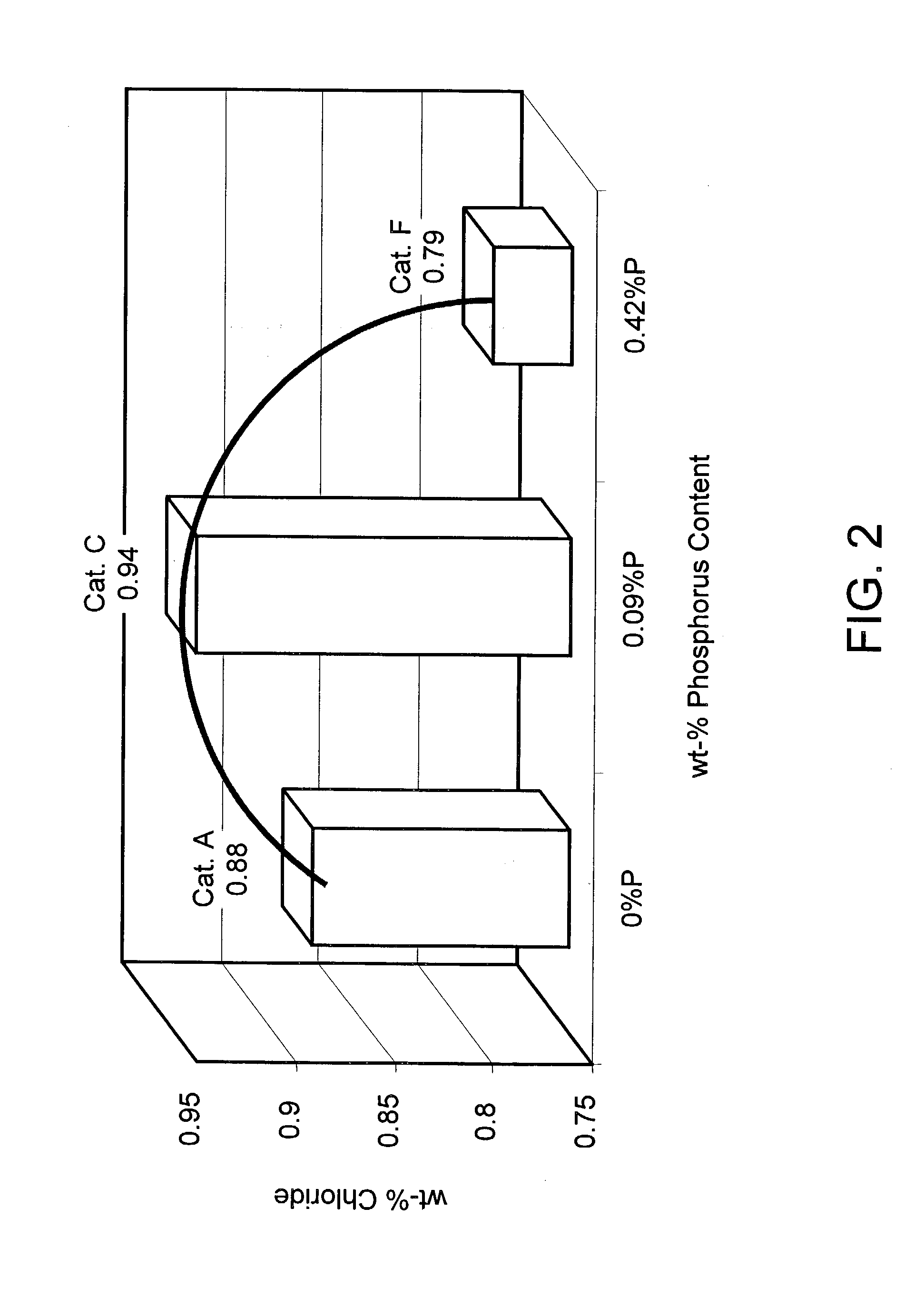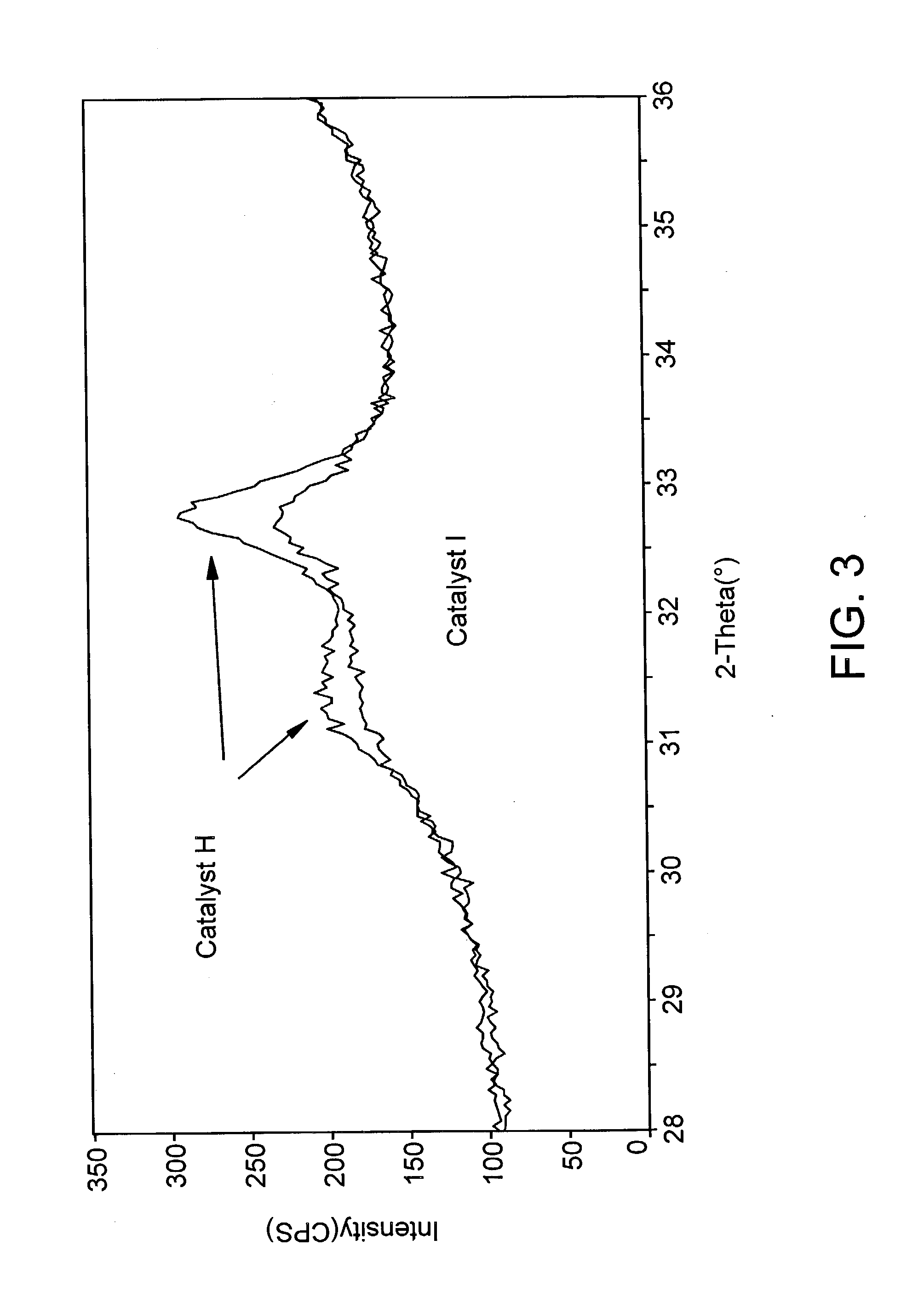Dilute phosphorus incorporation into a naphtha reforming catalyst
a technology of phosphorus and catalyst, which is applied in the field of process preparation of catalyst for naphtha reforming, can solve the problems of reduced support capacity, reduced surface area, and reduced yield of products boiling in gasoline range, and achieves the effect of increasing octan
- Summary
- Abstract
- Description
- Claims
- Application Information
AI Technical Summary
Benefits of technology
Problems solved by technology
Method used
Image
Examples
example 1
[0035] Phosphorus was added to the support as part of the forming process called extrusion. Six samples were prepared by adding phosphoric acid to the peptizing solution nitric acid such that the total moles of acid was approximately equivalent to 2 mass-% of the alumina powder. Thus, the amount of nitric acid used was decreased by the amount of phosphoric acid so that the total moles of acid remained about the same. Alumina powder was a blend of commercially available trade name Catapal B and trade name Versal 250. The solution was added to the alumina powder with various amounts of phosphoric acid corresponding to 0.06, 0.09, 0.18, 0.35, 0.42, and 0.51 wt-% phosphorus in the support, but where the balance of peptizing agent with nitric acid and maintained about a 2 mass-% ratio to the alumina.
[0036] After peptizing, the dough was mixed and extruded through a die plate to form extrudate particles. The extrudate particles were calcined at about 650° C. for about 2 hours. Thus, cata...
example 2
[0037] In order to gauge the effect of phosphorus content on catalyst surface area stability, the various catalysts were subjected to a hydrothermal treatment. This treatment comprised loading the catalysts into a tube furnace and subjecting them to conditions including a 725° C. temperature and 40 mol-% steam in 1000 cc / min air flow for 6 hours. The surface area of the catalysts after hydrothermal treatment were as follows: catalyst A was 149 m2 / gm, catalyst B was 154 m2 / gm, catalyst C was 155 m2 / gm, catalyst D was 155 m2 / gm, catalyst E was 162 m2 / gm, catalyst F was 174 m2 / gm and catalyst G was 167 m2 / gm. Thus, increasing phosphorus content showed increasing surface area. This data also is shown in FIG. 1.
example 3
[0038] However, higher amounts of phosphorus in an alumina support affect the ability of the catalyst to adsorb and retain chloride, which is a critical property for reforming catalysts to keep chloride while losing surface area as the catalyst ages. Thus, a stabilized catalyst must also have high chloride retention, and high amounts of phosphorus cause interference with the chloride anions.
[0039] In order to investigate the ability of supports to retain chloride, catalysts A, C, and F after the hydrothermal treatment conducted in Example 2, were subsequently chlorided under the following identical conditions. The catalysts were treated in a flowing air stream containing a molar ratio of hydrochloric acid to water of 55.5 at a temperature of 525° C. until reaching equilibrium levels of chloride adsorption. The chloride after treatment was as follows: catalyst A had 0.88 wt-%, catalyst C had 0.94 wt-%, and catalyst F had 0.79 wt-%. FIG. 2 also illustrates the resulting data. It can ...
PUM
| Property | Measurement | Unit |
|---|---|---|
| Temperature | aaaaa | aaaaa |
| Temperature | aaaaa | aaaaa |
| Temperature | aaaaa | aaaaa |
Abstract
Description
Claims
Application Information
 Login to View More
Login to View More - R&D
- Intellectual Property
- Life Sciences
- Materials
- Tech Scout
- Unparalleled Data Quality
- Higher Quality Content
- 60% Fewer Hallucinations
Browse by: Latest US Patents, China's latest patents, Technical Efficacy Thesaurus, Application Domain, Technology Topic, Popular Technical Reports.
© 2025 PatSnap. All rights reserved.Legal|Privacy policy|Modern Slavery Act Transparency Statement|Sitemap|About US| Contact US: help@patsnap.com



